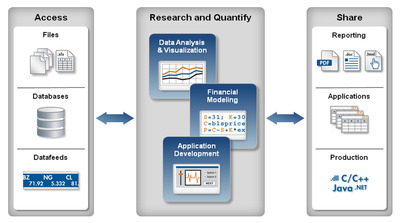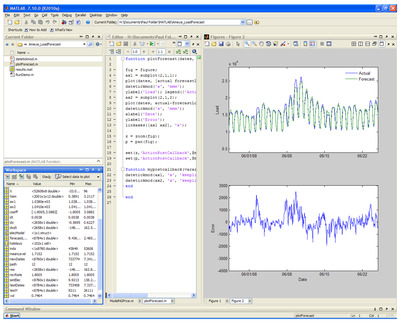Wind production revenue forecasting: best practices
Wind farm operators selling their power into wholesale electricity markets are looking for ways to maximise their profit and reduce revenue uncertainty. Like any energy producer, they need software tools to analyse historical data, forecast prices, and determine demand on the forward-reserve, day-ahead and real-time spot markets.
Unlike traditional energy producers, however, wind farm operators must also analyse and forecast difficult-to-predict wind and weather patterns. This type of analysis must take into account factors such as seasonality, temperature, time of day, and directional wind speed.
Managing a wind farm portfolio is a promising renewable energy business, but operators face unique risks and challenges in a market geared towards predictable fossil fuel-based generation. Software modelling tools provide a solution for better management of the inherent risks and financial uncertainty in wind portfolios.
The markets for wholesale electricity
Electricity producers, including wind farm operators, sell their electricity either through the regional wholesale electricity market or by entering into bilateral contracts with utilities. In Australia, the Australian Energy Market Operator (AEMO) administers the National Electricity Market (NEM), which sets the regional reference price (RRP) (known as dispatch price) for electricity at specific locations and time of delivery. The trading markets typically include a real-time market where spot RRPs are calculated every five minutes, based on real-time demand on the grid.
Why wind power is different
Wind presents several challenges to wind farm operators needing to maximise revenue from the electricity they generate. Wind is unpredictable, often stronger during off-peak hours when demand is low, and difficult to dispatch. The challenge is to find the optimal portfolio for selling energy in the spot market and long-term contracts. Selling in the spot market has no energy production uncertainty, but operators must accept the prevailing market price. An alternative is to enter into long-term bilateral contracts; here, price and wind production forecasts are important tools in anchoring the value and risk for these contracts or for hedging strategies.
Wind price and generation forecasting
The two key components to forecast are the amount of wind energy produced and the energy market price for each of the available time frames. These often require numerous forecast points; for example real-time energy markets issue RRPs every five minutes, or about 8760 per month for each location. This requires a software system that can quickly perform multiple numerical simulations and that is flexible enough to allow a wind farm operator to customise algorithms based on their wind assets.
The workflow for energy pricing and production forecasting has three main phases: access, explore and discover, and share (see Figure 1). MATLAB nicely supports this workflow by combining a powerful numeric engine and technical programming environment with interactive modelling, visualisation and deployment tools. First, the relevant data sources used for the forecasting model are accessed from historical databases, turbine energy output files, and data feeds. Second, data analysis and visualisation tools are used to understand how wind energy production varies by location, weather conditions, time of day, and time of year. This can help analysts uncover key relationships and evaluate various statistical methods. Third, results are shared via reports and custom applications.

In the exploration and discovery phase, the data analyst can employ various statistical tools to accurately estimate the energy produced per wind turbine. Common choices include autoregressive models and neural networks. An important consideration in a forecasting environment is the ability to take one or more off-the-shelf statistical models, quickly implement and test them against historical data, and validate them against other models.
Another powerful tool that can improve accuracy is bootstrap aggregation, a type of ensemble learning. Figure 2 shows an example using bootstrap aggregated regression trees; this example was trained with three years of historical data including RRP, temperature and dewpoint. The model accurately captures the relationship between the system load and weather, day of the week, hour of the day, and holidays to produce next-day forecasts accurate to within 3% of the observed load.
Similar models can help develop day-ahead and longer-term forecasts for energy produced, market price and projected revenue. In customisable environments, other variables such as the penalty for over- and under-production can be included to help operators evaluate various scenarios for selling their generated power.

The third phase in the workflow is sharing the results. This can include publishing reports as documents or on the web, deploying forecasting applications, or integrating algorithms into production systems. Automating manual steps in this phase can reduce errors and free up analysts for strategy and decision-making activities.
Gas Natural Fenosa, the fourth largest energy company in Spain, is one example of an organisation successfully using a technical computing environment to project energy production capacity and electricity demand to optimise a portfolio of generation assets. The company’s diverse portfolio includes coal, combined-cycle gas, nuclear, wind and hydroelectric power. Gas Natural Fenosa analysts developed forecasting models in MATLAB to project energy-production capacity and demand, which enabled them to optimise their asset portfolio. The models incorporate historical usage patterns, weather forecasts, production costs and other factors. For wind farm modelling, they used MATLAB to correlate historical wind-strength measurements with actual electricity production, first using simple linear correlation and then using other advanced statistical models to enhance the predictive accuracy. To maximise the potential value of custom statistical models, they must be deployed across the organisation. In Gas Natural Fenosa’s case this means sharing the results with analysts who optimise production resources, minimise production costs and verify infrastructure capacity. Programs are deployed as stand-alone applications that run automatically day and night. For Gas Natural Fenosa, a key benefit of this approach is the flexibility with which they can develop, update and optimise their forecasting models in response to changing needs.
Risk analysis tools for wind farms
Risk analysis is another important tool for wind farm operators to better manage the price and volume volatility of wind generation portfolios and minimise the financial risk this volatility represents to the enterprise, customers and shareholders. Weather variations cause volume volatility, and the potential of negative prices and tariffs for under-delivery and over-delivery contribute to price volatilities.
Automated risk-forecasting systems, such as the one developed by Horizon Wind Energy using MATLAB, can quantify value at risk, revenue at risk, and projected revenue for a wind farm portfolio. Typical systems link price forecasts to volumetric forecasts for the wind power generated for each wind farm location. Horizon’s system replaced a complex network of calculations, which used 15 spreadsheets, some with as many as 500,000 rows. Monthly price forecasts for over 20 of its wind farm sites are produced using historical data from market prices, daily forward contracts and option implied volatility. Wind power production is forecasted for each site using statistical distributions to fit local historical wind level data. The results form part of a risk management process Horizon uses to hedge its exposure, saving millions of dollars through better price and congestion management.
Software modelling and forecasting tools
Wind farm operators have several different software modelling and forecasting approaches to choose from. These include informal spreadsheets such as those created in Excel, turnkey trading and risk management systems, and technical computing languages and environments such as MATLAB. The Gas Natural Fenosa and Horizon Wind case studies are illustrative examples in which wind production and price forecasting was automated using software tools that let operators apply their own experience and insights. The tools allow analysts to enhance accuracy by prototyping statistical modelling methods, quickly adapting models in response to changing needs or regulations, and sharing applications with other analysts and operations managers.
Wind power and energy trading forecasting tools are essential for wind farm operators, but these same modelling and forecasting tools can also be used extensively by other organisations in the energy market, including other electricity producers, electric utilities, power marketers and RTOs.
Anticipating maintenance problems with predictive analytics
By utilising predictive analytics, process manufacturers can predict failures, enhance...
Air-gapped networks give a false sense of security
So-called 'air-gapped' OT networks can still fall victim to cyber attacks, so what is the...
Maximising automation flexibility: the ISV-driven approach
Vendor lock-in has long been a significant barrier to innovation in the industrial sector, making...












